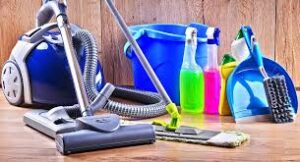Step-by-Step: Cleaning Your Vacuum Filters and Brushes
A vacuum cleaner is an essential household tool, but to keep it running efficiently, regular maintenance is crucial. Cleaning your vacuum filters and brushes not only ensures optimal performance but also prolongs the life of your device. This step-by-step guide will walk you through the process of cleaning your vacuum’s filters and brushes, ensuring your home stays clean and allergen-free.

Why Cleaning Your Vacuum Filters and Brushes is Important
Over time, vacuum filters and brushes accumulate dirt, hair, and debris, which can:
- Reduce suction power.
- Spread allergens and dust back into the air.
- Overwork the motor, potentially leading to damage.
- Decrease the lifespan of your vacuum cleaner.
How Often Should You Clean Vacuum Filters and Brushes?
The frequency of cleaning depends on usage and the type of vacuum cleaner. Here are general guidelines:
- Filters:
- Washable filters: Clean every 1-3 months.
- HEPA filters: Check and replace as per the manufacturer’s instructions, typically every 6-12 months.
- Brushes:
- Inspect after every use if you have pets or long hair.
- Clean thoroughly every 1-2 weeks for optimal performance.
Tools and Supplies You’ll Need
- A pair of scissors
- A small brush or old toothbrush
- Dish soap or mild detergent
- Warm water
- Microfiber cloths
- A soft brush for delicate parts
Step-by-Step Guide to Cleaning Your Vacuum Filters
1. Turn Off and Unplug the Vacuum
Before starting, ensure your vacuum is turned off and unplugged for safety.
2. Remove the Filters
Refer to your vacuum’s manual to locate and remove the filters. Most vacuums have:
- Pre-motor filters: Protect the motor from dirt and debris.
- Exhaust filters: Trap fine dust particles and allergens.
3. Shake Off Loose Dirt
Gently tap the filters over a trash can to remove loose dirt and debris. Be careful not to damage the filter material.
4. Wash the Filters (if washable)
- Rinse the filters under warm running water.
- Use a small amount of dish soap if needed, but ensure all soap is rinsed out.
- Do not scrub HEPA filters unless specified by the manufacturer.
5. Dry the Filters Completely
- Shake off excess water.
- Leave the filters to air dry for at least 24 hours. Ensure they are completely dry before reinserting to prevent mold or mildew.
6. Reinstall the Filters
Once dry, place the filters back into the vacuum. Ensure they are properly secured.
Step-by-Step Guide to Cleaning Vacuum Brushes
1. Turn Off and Unplug the Vacuum
As with the filters, always unplug the vacuum before cleaning the brushes.
2. Access the Brush Roll
- Flip the vacuum over to access the brush roll.
- Use a screwdriver if needed to remove the cover.
3. Remove Hair and Debris
- Use scissors to cut away tangled hair and threads.
- Pull out debris carefully to avoid damaging the bristles.
4. Clean the Brush Roll
- Use a small brush or toothbrush to clean between the bristles.
- For removable brushes, rinse under warm water with mild soap.
- Dry thoroughly before reinserting.
5. Inspect for Damage
Check for worn or damaged bristles. Replace the brush roll if necessary.
6. Reassemble the Vacuum
Secure the brush roll back in place and replace any covers.
Additional Maintenance Tips
- Check for Blockages: Inspect the vacuum hose and attachments for clogs.
- Clean the Dustbin: Empty and rinse the dustbin regularly to maintain airflow.
- Replace Filters on Schedule: Follow the manufacturer’s recommendations for filter replacement.
Common Mistakes to Avoid
- Skipping Regular Maintenance: Ignoring regular cleaning can lead to reduced performance and costly repairs.
- Reassembling Wet Parts: Always ensure filters and brushes are completely dry before reassembly.
- Using Harsh Chemicals: Stick to mild soap and water to prevent damage.
Benefits of Regular Maintenance
- Improved suction power.
- Enhanced air quality by reducing allergens.
- Extended vacuum lifespan.
- Consistent cleaning performance.
Frequently Asked Questions
1. Can I wash all vacuum filters? No, not all filters are washable. Check your vacuum’s manual to determine whether the filters can be washed or need replacement.
2. What should I do if my brush roll stops spinning? Clean the brush roll and check for obstructions. If the issue persists, the belt or motor may need servicing.
3. How do I know when to replace my filters or brushes? Replace filters as per the manufacturer’s recommendations or if they appear damaged or clogged. Replace brushes if the bristles are worn or the roll is damaged.
Conclusion
Maintaining your vacuum cleaner by regularly cleaning its filters and brushes is a simple yet effective way to ensure it performs optimally for years. By following this step-by-step guide, you’ll keep your vacuum in top condition, improve cleaning results, and create a healthier home environment.
Stay tuned for more cleaning tips and product guides.





